If you’re suffering from GAS like me, being aware of a rare, expensive, and sought-after lens that you know you definitely don’t want is a great thing. 6 years ago Leica re-released one of their classics, the Thambar 9cm f/2.2. Apart from collectors and hardcore Leica aficionados, not many have heard of it before then. No wonder, it was being manufactured for only 6 years in the 1930s and total production quantity was a mere 2,984. It was originally designed to be a soft-focus portrait lens and as such didn’t intrigue me much.
I thought it was just a bit silly. Having seen samples from both the re-released Thambar and the original one there was nothing there that I wanted to replicate. It’s one thing if a lens isn’t particularly sharp, quite another if it’s deliberately designed to be soft, or rather to exhibit high levels of spherical aberrations, causing the image to be excessively glowy and with diminished contrast. The two things I love most, especially in black and white photography, are a crisp image and a high contrast. I wouldn’t go as far as the usual anti-Leica bandwagon who declared it “an embarrassment for Leica” and proof that “there’s a sucker born every minute” but it was definitely a swipe left kind of situation.
That is until last week when I was browsing Ebay and came across this mess of a lens:
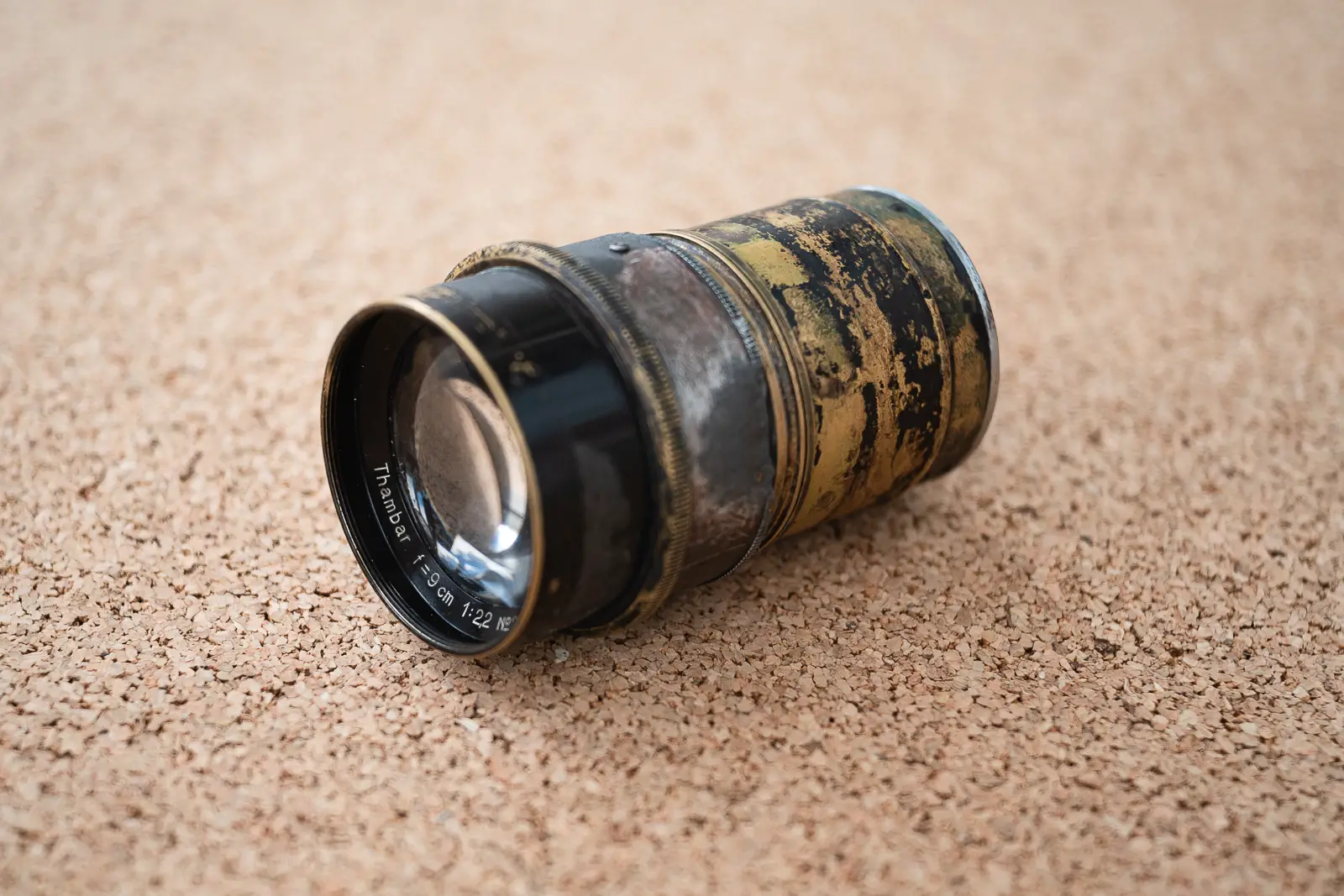
I’ve been quite keen recently on pre-war lenses and the Thambar is the holy grail of that era as far as lenses for LTM go. I figured, with the vintage lens prices continuously going up, it was my only chance to ever acquire it for a 3-digit price. I was either going to take the plunge or have it haunt me for a long, long time. This particular copy was manufactured in 1934, the first year of its production.
I was warned by the seller it was going to take a miracle to get the lens to a working condition but the excitement of the remote possibility it might be doable was too much to resist. When I opened the box and first attempted to focus it, it dawned on me that the entire focusing ring was missing and there was nothing stopping the helicoid from unscrewing completely. Just a small detail that I missed completely and which seemed like a bigger hurdle than the stuck aperture.
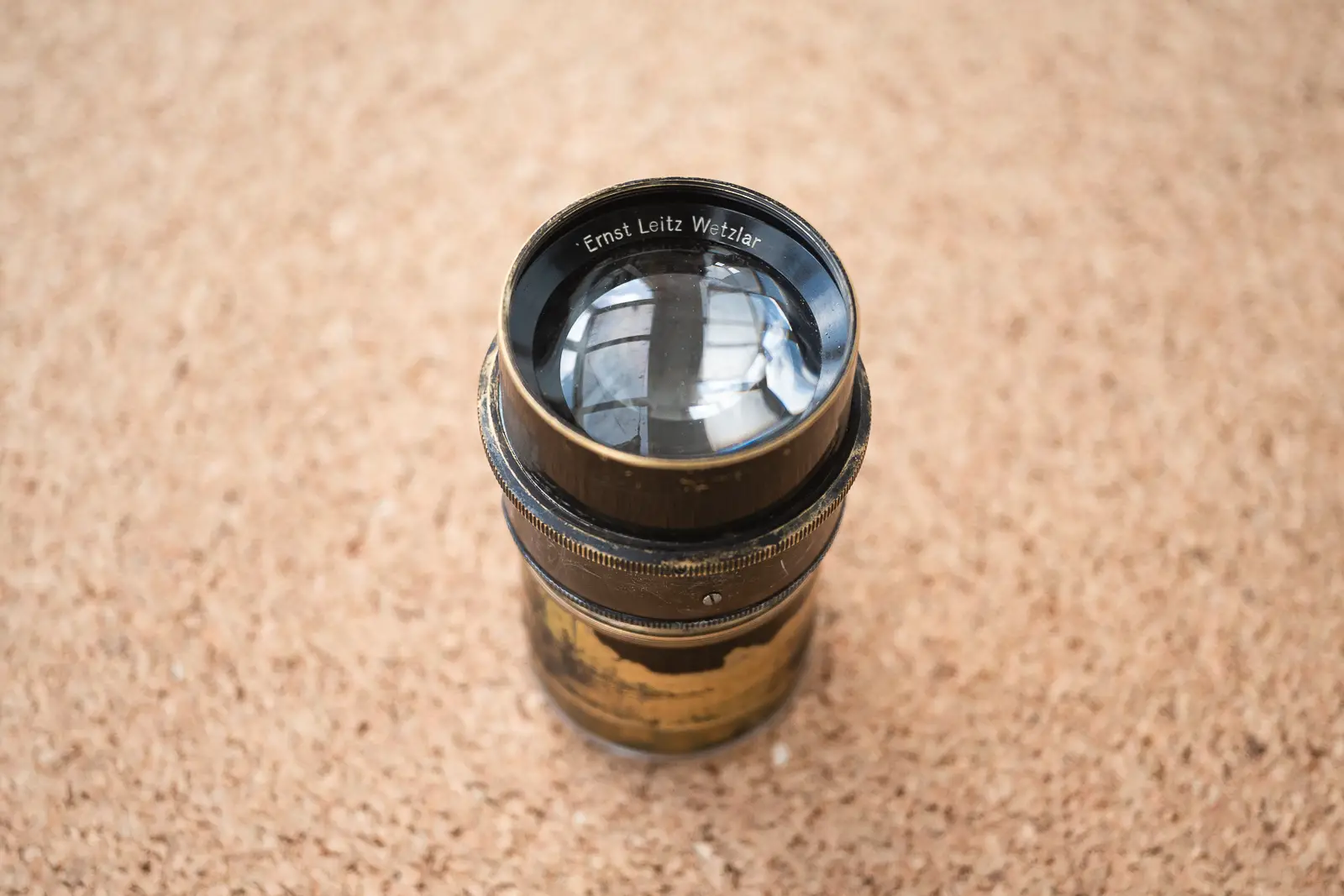
Overall, the body of the lens was in an extremely poor shape. I’m not talking about brassing all over, I have other lenses from the same period that are heavily brassed and I really like the look of it. The Thambar however seems to have suffered a blow so strong it completely shaved off part of one of the knurled rings and made a dent. It happened in a section right below the aperture ring and got me worried that’s what was stopping the aperture from opening correctly, not dried-up old grease.
The seller had no idea what happened to this lens. Was it dragged by a car on a dirt road? Did it attempt to jump the Springfield Gorge? What was so bad to make the body end up in such a poor shape yet, by some miracle, left the glass unscathed? It’s definitely a testament to how much abuse these early brass lenses can suffer and still keep on ticking. But I must admit I wasn’t quite ready for how poorly the Thambar was and I sat on it for a few days unsure how to proceed. Besides the focus ring, the rangefinder-coupling appeared to be missing as well. I have no clue what else got lost along the way, what I do know is 62g of the lens is unaccounted for.
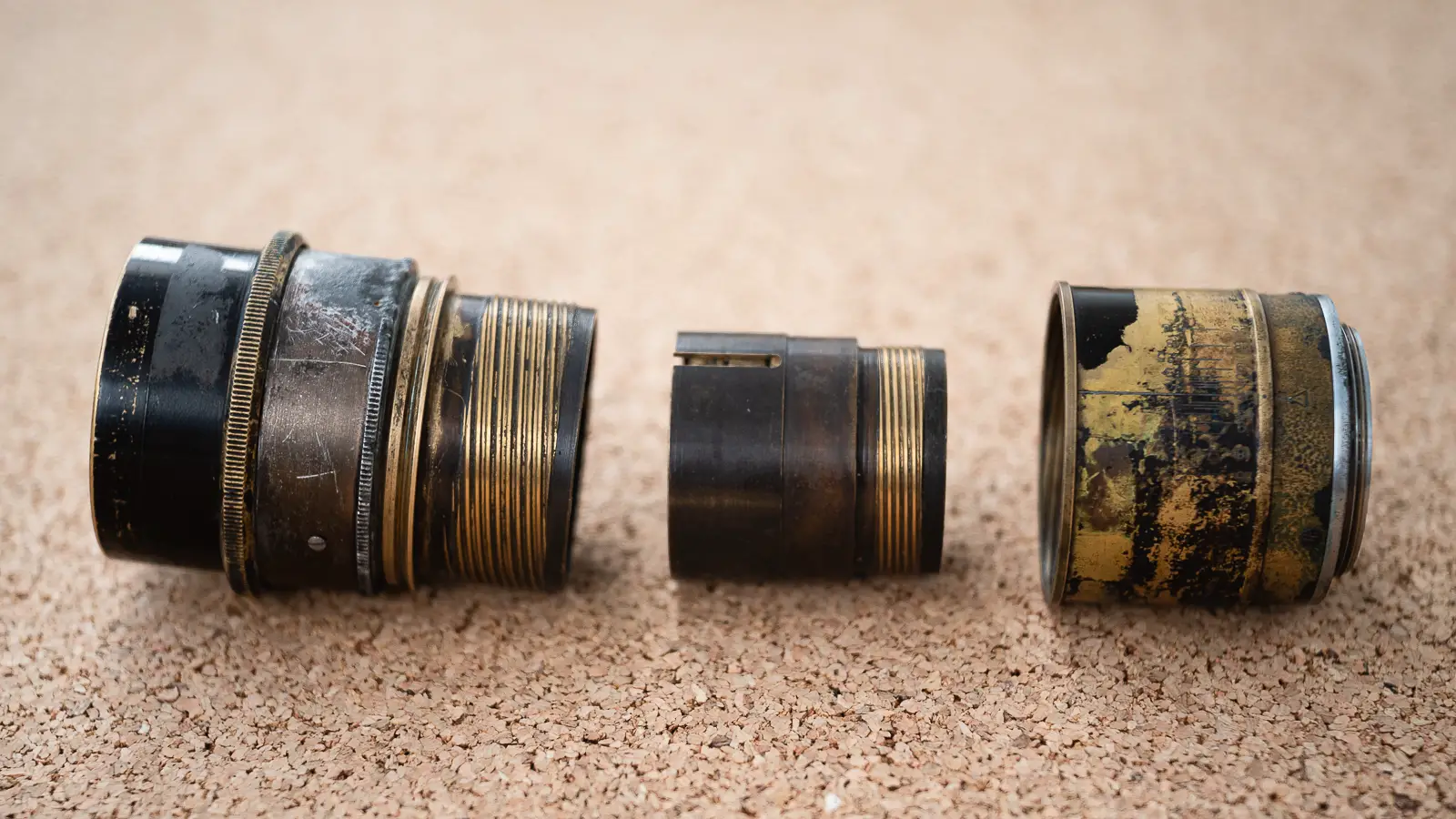
My hope was I was going to be able to use it a bit despite the aperture being frozen and then send it off to be looked at. Leica SL seemed like a good fit for giving the old boy a try. I used an L-mount adapter with a helicoid so I could minimise using the helicoid in the lens. My fear was I was going to focus too close and have the front of the lens unscrew completely and fall to the ground, potentially ruining the only aspect of this lens that was still in a decent shape – the optics.
Image quality
Before I describe my early findings, please keep in mind the following: the aperture was permanently stuck somewhere between f/2.8 and f/3.5 (as far as I could tell, no aperture markings remained on the lens) and the optics had quite a bit of dust inside and potentially a bit of haze too. I shot the lens as I received it and it can only go up from here.
The first thing I noticed when still out shooting with the Thambar was it’s extremely prone to flaring and veiling. If the sun was too close to the edge of the image, it often made the entire picture white. In less extreme situations, the lens produced quite an attractive rainbow flare that I also observed in the other 9cm Leitz lens I have – the collapsible Elmar. Even with no visible flare, there was often significant loss of contrast, particularly in the central part of the image. However, when shooting with the sun, especially in the evening, the Thambar produced images with a decent amount of contrast and clarity. This lens definitely needs to be used with a hood.
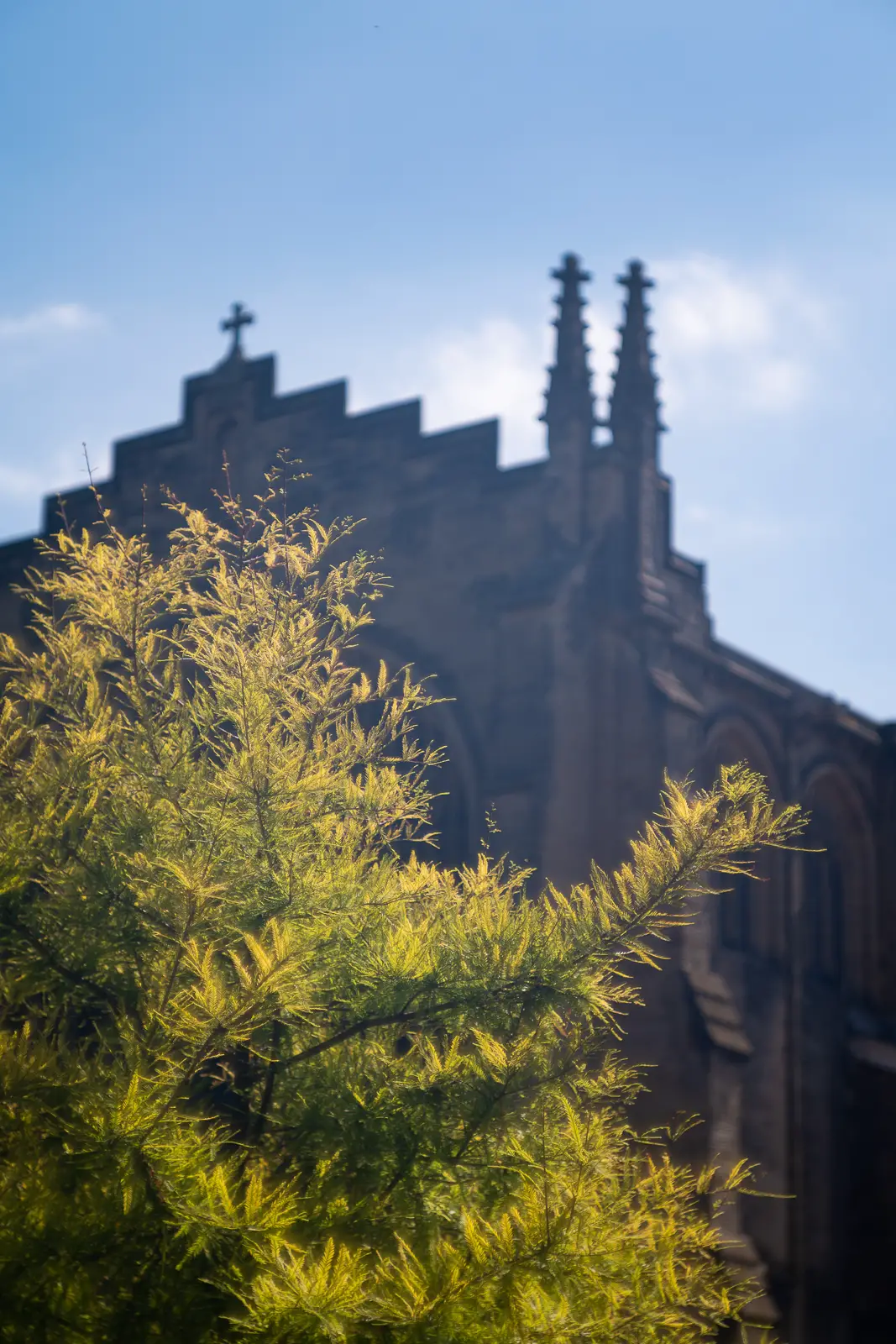
Veiling and diminished contrast
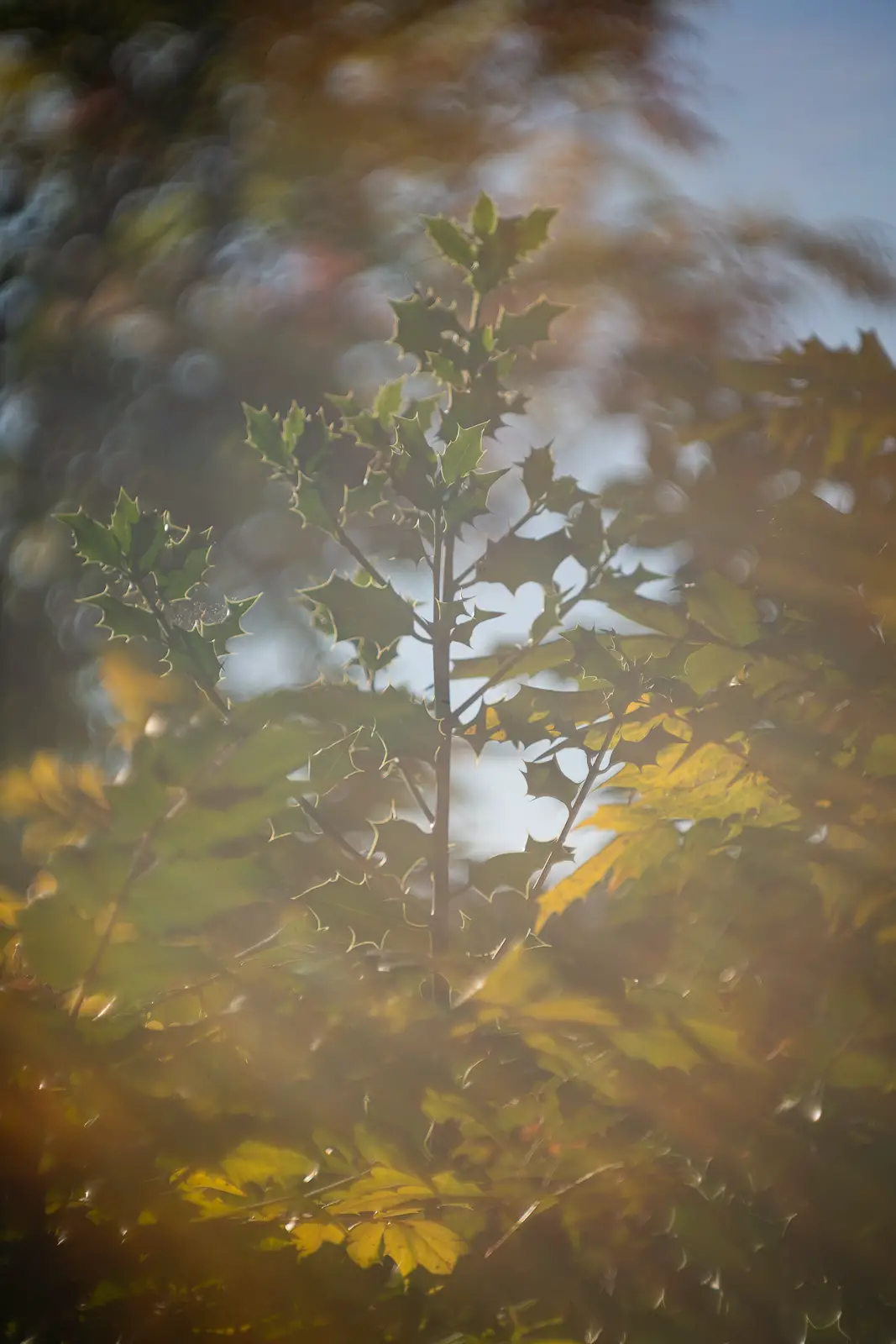
Very pronounced veiling and flare, with contrast decreased in the centre of the image

Rainbow flare similar to that produced by the Elmar 9cm f/4
My second observation was that the Thambar is actually surprisingly sharp, at least in the centre. I mean, it’s right there in Leica’s article on it:
“When developing the Thambar, the engineers surrounding Max Berek were able to draw on their vast expertise regarding the causes and correction of optical flaws, in order to design an intrinsically sharp lens which nevertheless permitted a carefully determined level of spherical aberrations – thus giving rise to the desired soft-focus effect.”
Source: leica-camera.com
But it just sounds like marketing bullshit if you only look at the official samples. But once you try it, at least not fully wide open, and definitely without the spot filter meant to cut the rays that would have produced the sharpest portion of the image, it does surprise you. I was expecting way less from it. The spherical aberration is there of course and is especially visible further away from the centre of the image. In certain situations it doesn’t look that far off the hazy, bloomy picture I saw in the samples.
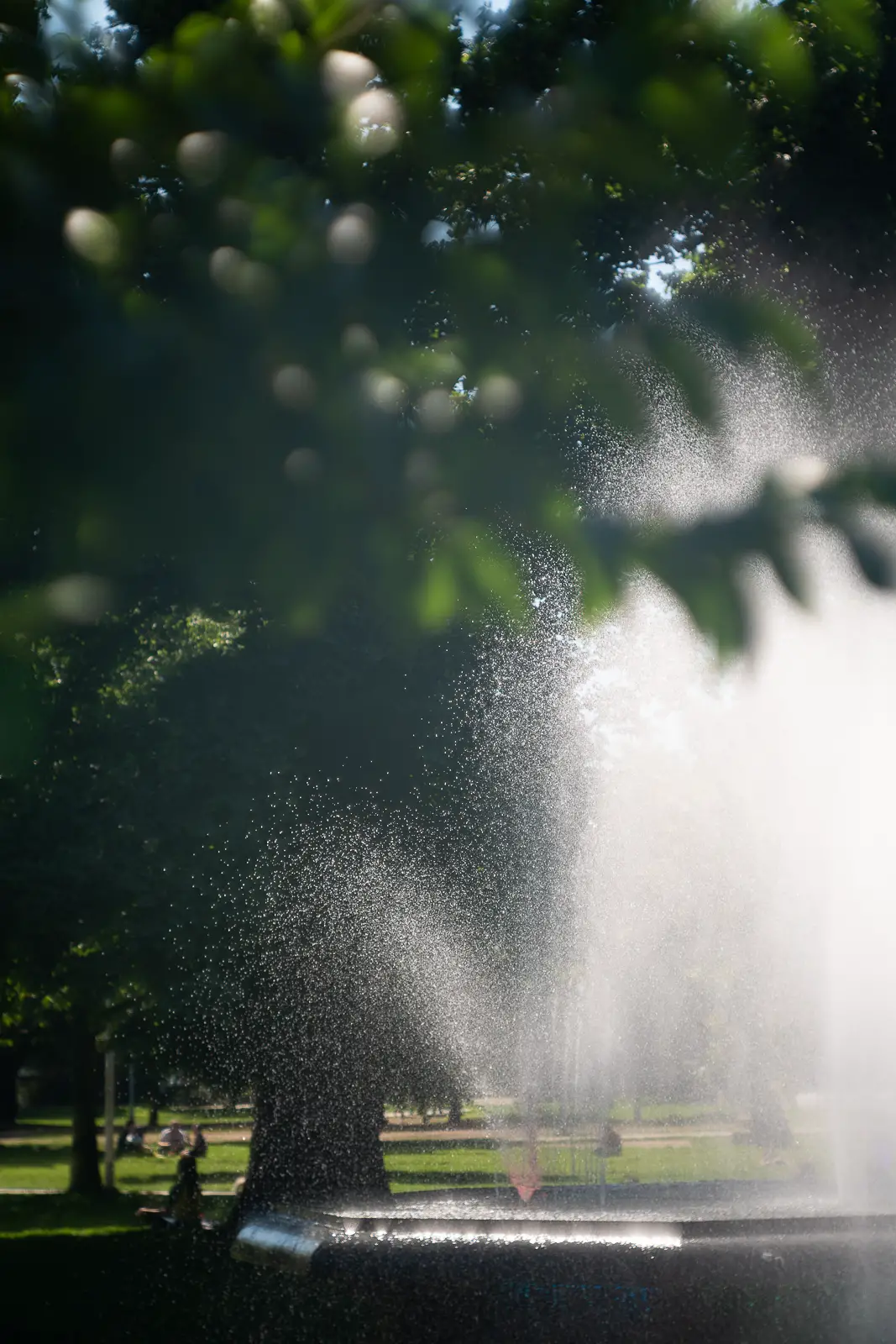
The most blooming effect I was able to get out of the lens at this aperture

An example of a clear, sharp, and contrasty image
The main reason Leitz released the Thambar was to please those who complained most of their lenses were too slow for portrait photography. Therefore, you can expect a lot of attention being devoted to the lens’s bokeh. Before I got the chance to try the lens myself, I looked through the photos tagged with it on Flickr and found one that was very unusual. It featured a string of fairy lights out of focus and each bokeh ball didn’t look like the usual soap bubble but like a small jellyfish. They very much resembled the sort of flares I was getting out of my Heligon 5cm f/2 but each bokeh bubble featured its own little flare.
I didn’t manage to find this effect anywhere else and assumed it must have been the result of using the accessory spot filter meant to make the spherical aberration even more pronounced. But lo and behold, among the other images featuring very nice but pretty standard bokeh I saw this:
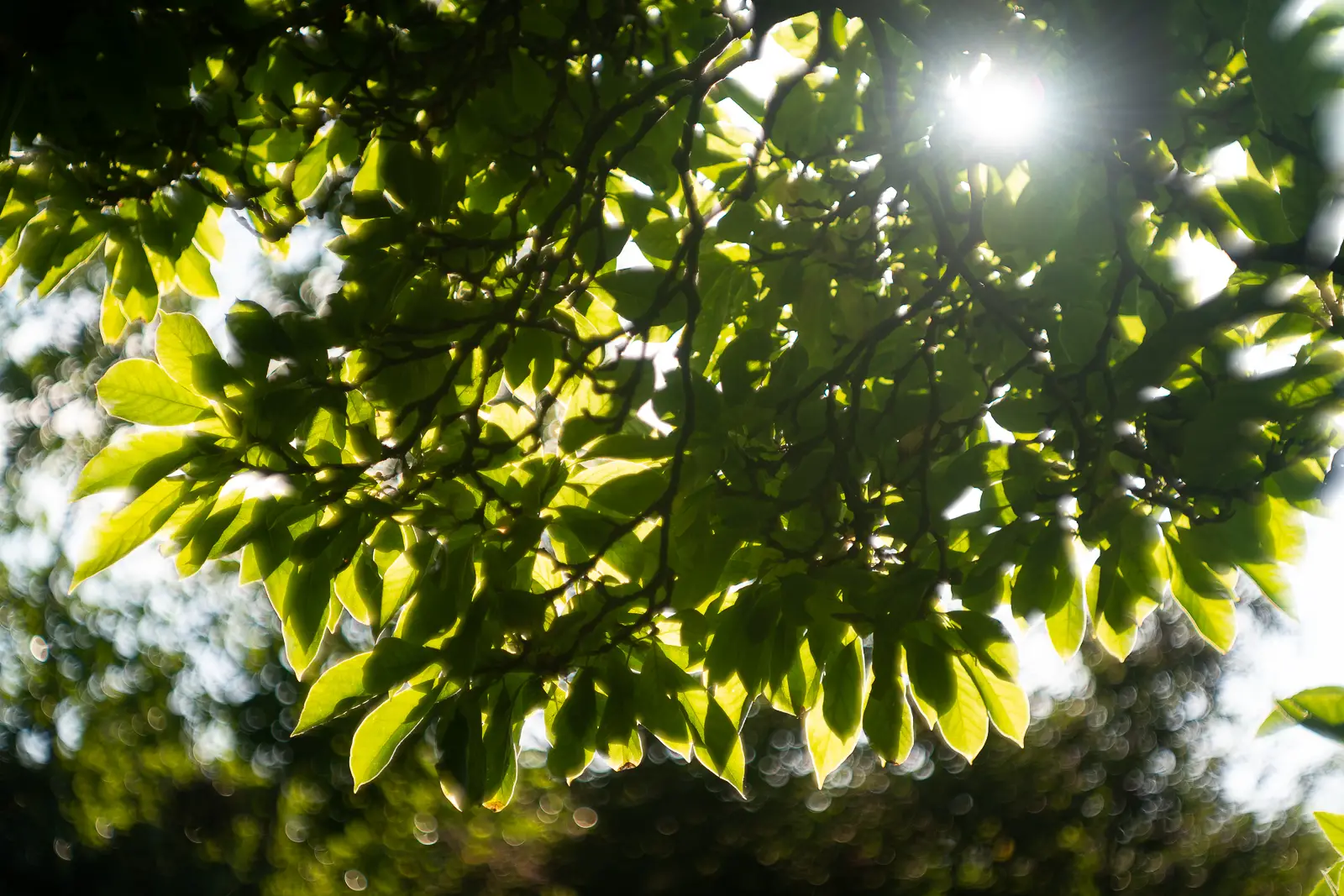
Example of “jellyfish” bokeh
I’m not sure what exactly causes this “jellyfish bokeh”, perhaps it has something to do with shooting against the light. So far I only managed to capture it in this one photo and it’s pretty small due to the aperture not being fully open. In other images featuring bokeh, if you didn’t know any better you might think the lens was shot wide open. This is due to the whopping 20-blade aperture of the Thambar producing perfectly round bokeh and maintaining that wide-open character even stopped down. Once again, let’s refer to Leica’s article on the Thambar:
“Because the aberration increases towards the periphery of the optical system, both the extension of the depth of field and the degree of diffusion can be precisely controlled via the stepless aperture ring.”
Source: leica-camera.com
It is not unusual to stop a lens down in order to improve the image quality (especially the sharpness and contrast) but in this case it’s not a mere side-effect. Thambar’s aperture has a dual role – to increase the depth of field and to control the amount and distribution of the spherical aberration without having an immediate detrimental effect on the lens’s character and its usefulness for portraiture. Those like me who tend to use a lens either wide-open or stopped down to f/5.6-8 should definitely pay more attention to the intermediate aperture settings in the case of this lens to find their preferred sweet spot.

A relatively crisp image that none the less shows lots of character
Despite the downsides, I thought this initial trial run was a success, considering I wasn’t sure whether I was going to be able to use the Thambar at all without a professional make-over. One of the reasons I first used the Leica SL and not the Monochrom was I needed filters, especially the red. I ordered a Rollei E49 filter and once it arrived, I was excited to try it out in black and white, even if it meant using the awful VF-2 electronic finder due to the missing rangefinder coupling. However, to my disappointment, the filter didn’t fit.
First I thought it was the wrong thread-pitch but the filter simply seemed too large. I picked up a 48mm Canon filter and it fit like a glove! Turns out I didn’t Google it well enough – the new Thambar-M takes E49 filters but the original takes E48. So it not only turned out I already have all the filters I need but a hood as well. Canon used to make these great modular clamp-on hoods consisting of a silver ring marked with the lens diameter it can attach to (all their lenses that take 48mm filters have a diameter of 50mm) and a black metal hood dedicated to a particular lens that screws into that ring. I tried a couple of the silver rings and only one actually fit (just barely) despite theoretically being the same size as each other. Not sure if Canon’s tolerances aren’t as tight as they could be or perhaps there were minor differences introduced to the design of those hoods over time. The way to circumvent the issue of the hood mounting ring being too small is to use a clear E48 filter, as long as it’s the standard one, not the thin version. The lens my particular hood was dedicated for is Canon 85mm f/1.9 so it’s a great match for the Thambar.
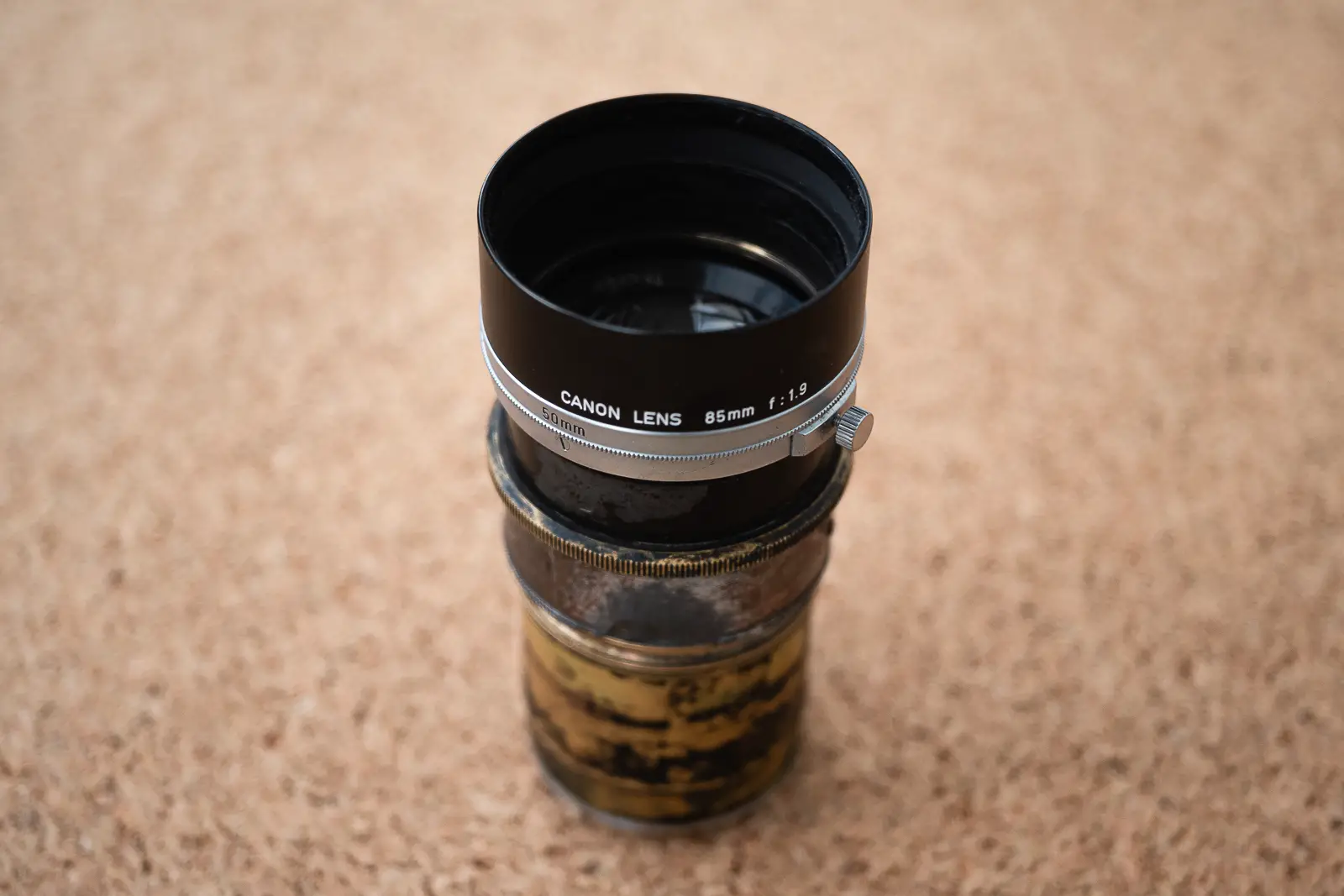
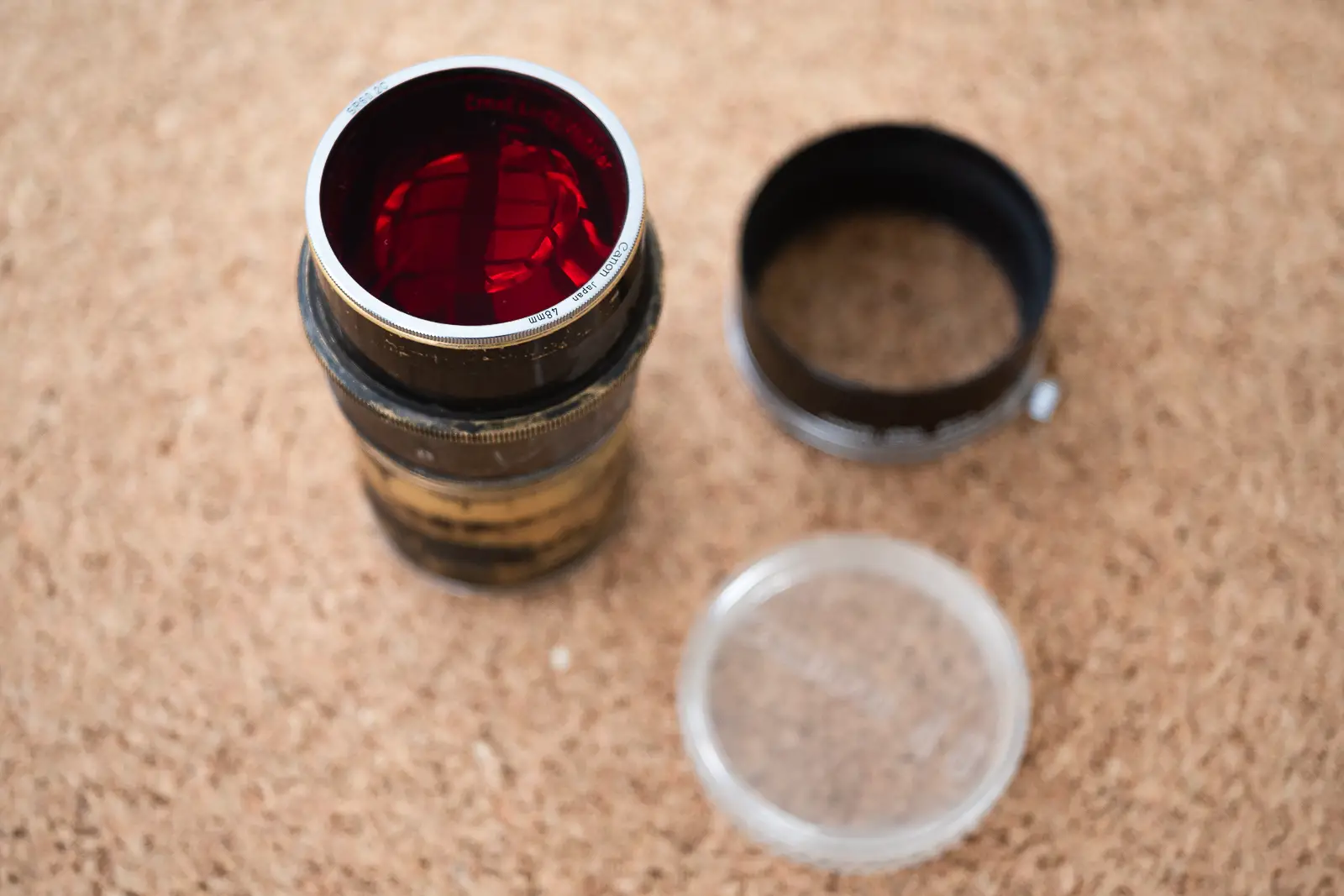
Once equipped with my Monochrom typ 246, the Thambar, and a red filter and hood from Canon I embarked on phase two of my tests. I can’t help but snap into architecture photography mode when using this sort of setup even though architecture might be a very bad idea in the case of this lens. Since at short distances the lens was producing a surprisingly clean picture, I fully expected it to perform poorly at longer distances. And I was sort of right, but only sort of.
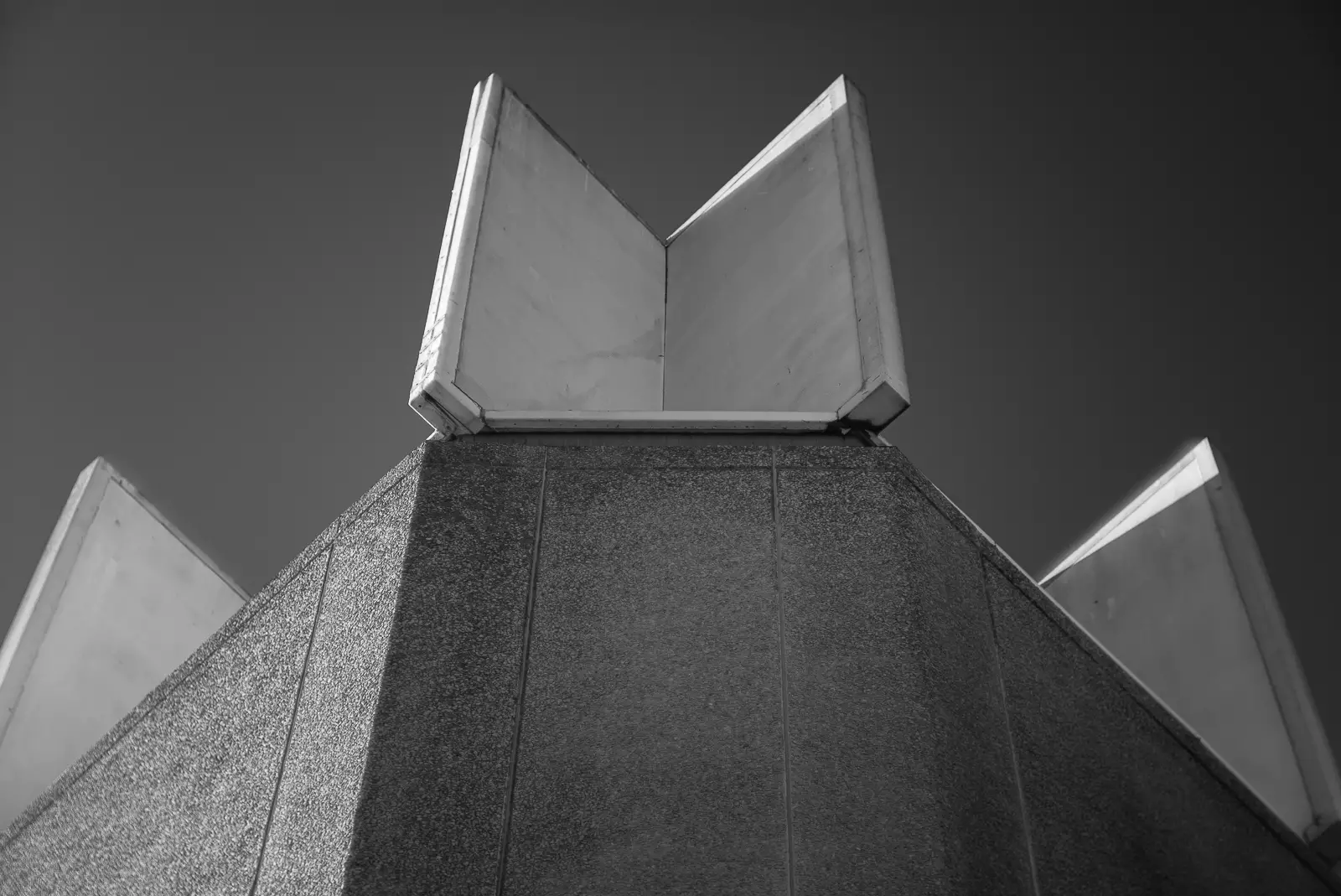
An architectural detail demonstrating the degree of loss of sharpness towards the edges of the image
Naturally, sharpness off-centre plays a smaller role when shooting up-close because objects on the sides of the image will rarely be in focus anyway. Due to a relatively long focal length and a largeish aperture chances are very little will actually be in focus. And as long as the subject is in the central area of the picture, the Thambar leaves little to be desired, especially considering this lens will be 90 years old next year. But shooting architecture, even if it’s details, is a different matter.

The lens is sharp enough in the centre to be useful for architecture as long as you hide the poor side performance with some natural framing
The spherical aberration creeping in is quite visible, even in a web-sized image. But it still leaves enough area that is reasonably sharp that with a bit of careful framing you can sort of get away with it even with the lens stopped down just a little bit. But once I’m able to stop down to f/5.6 or f/8 I hope it will actually be a very usable, versatile lens. Embarrassing performance? Hardly. Contrast leaves a lot to be desired but the resulting images handle treatment in Lightroom very well and with the help of some extra clarity and dehazing the Thambar is capable of producing pretty great results. The hood also helps a lot.
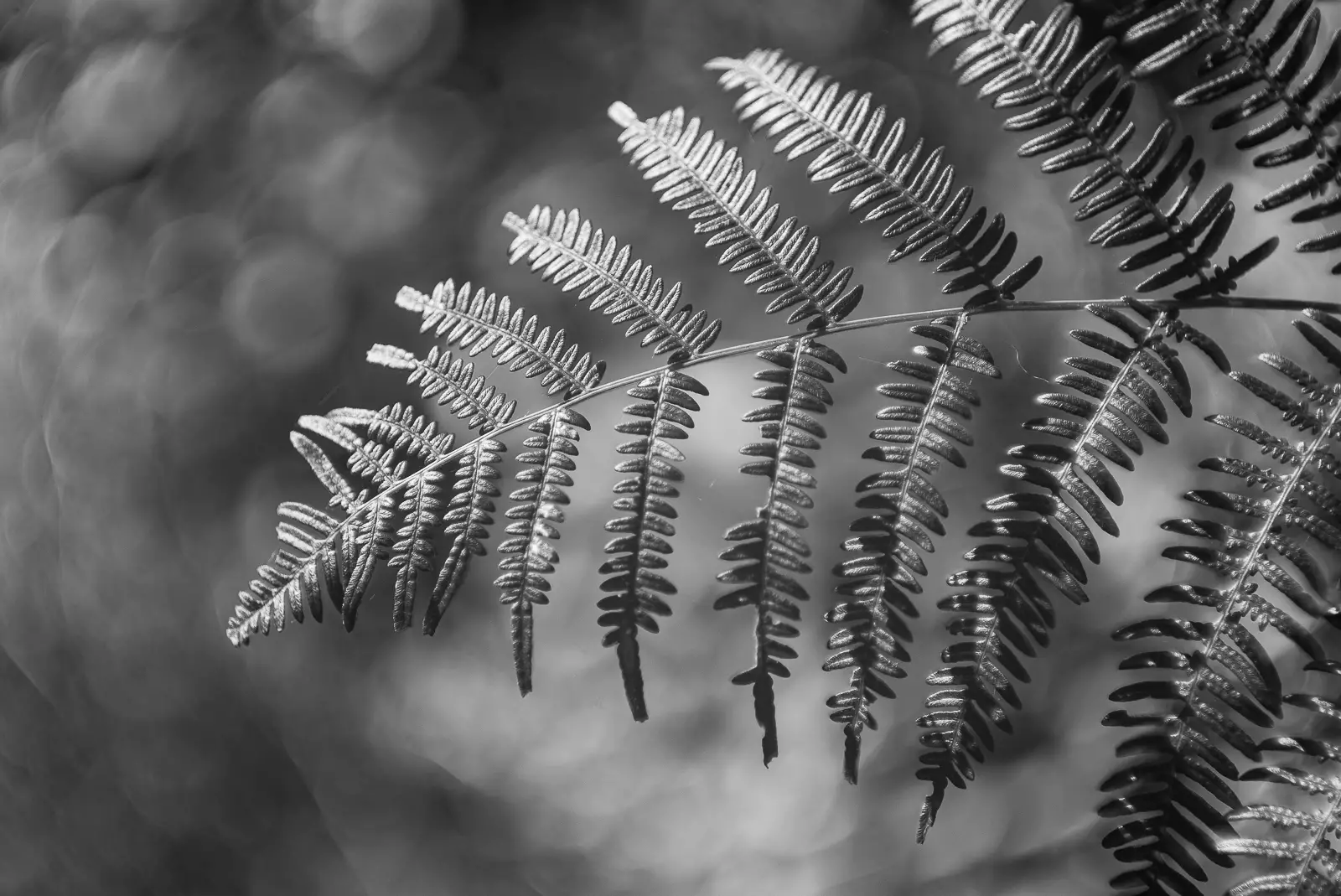
The sharpness up-close is impressive for an almost 90 year old lens
Funny thing about the hood. If you’re into including flares in your images, you should still consider using it. Without the hood, the flaring is just too strong in most cases and additionally you end up with diminished contrast in the central part of the image. The hood stops most of the veiling from forming (or so I thought, please keep reading) and still allows plenty of flare fun to be had.
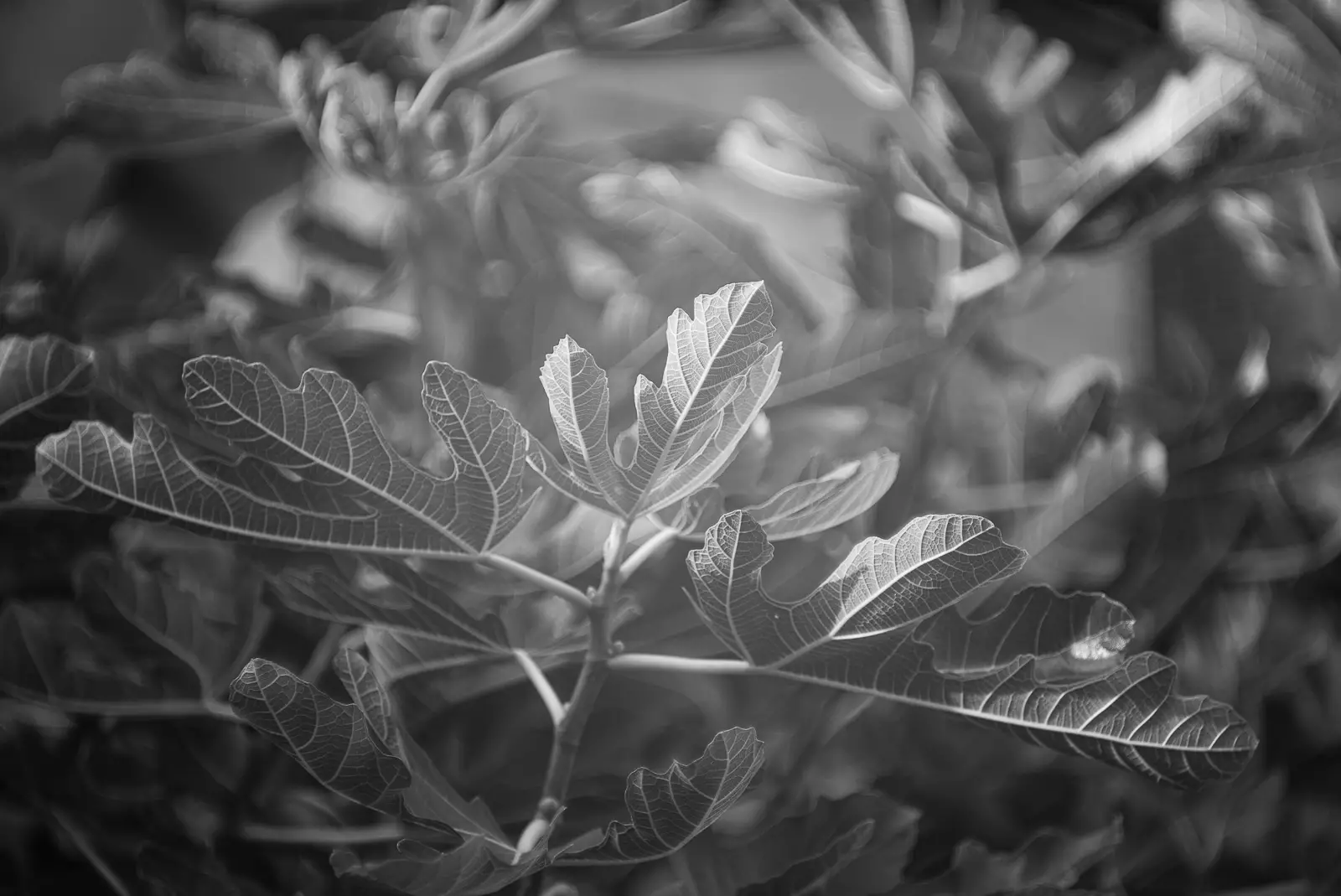
No flare but a degree of loss of contrast and very good sharpness close-up
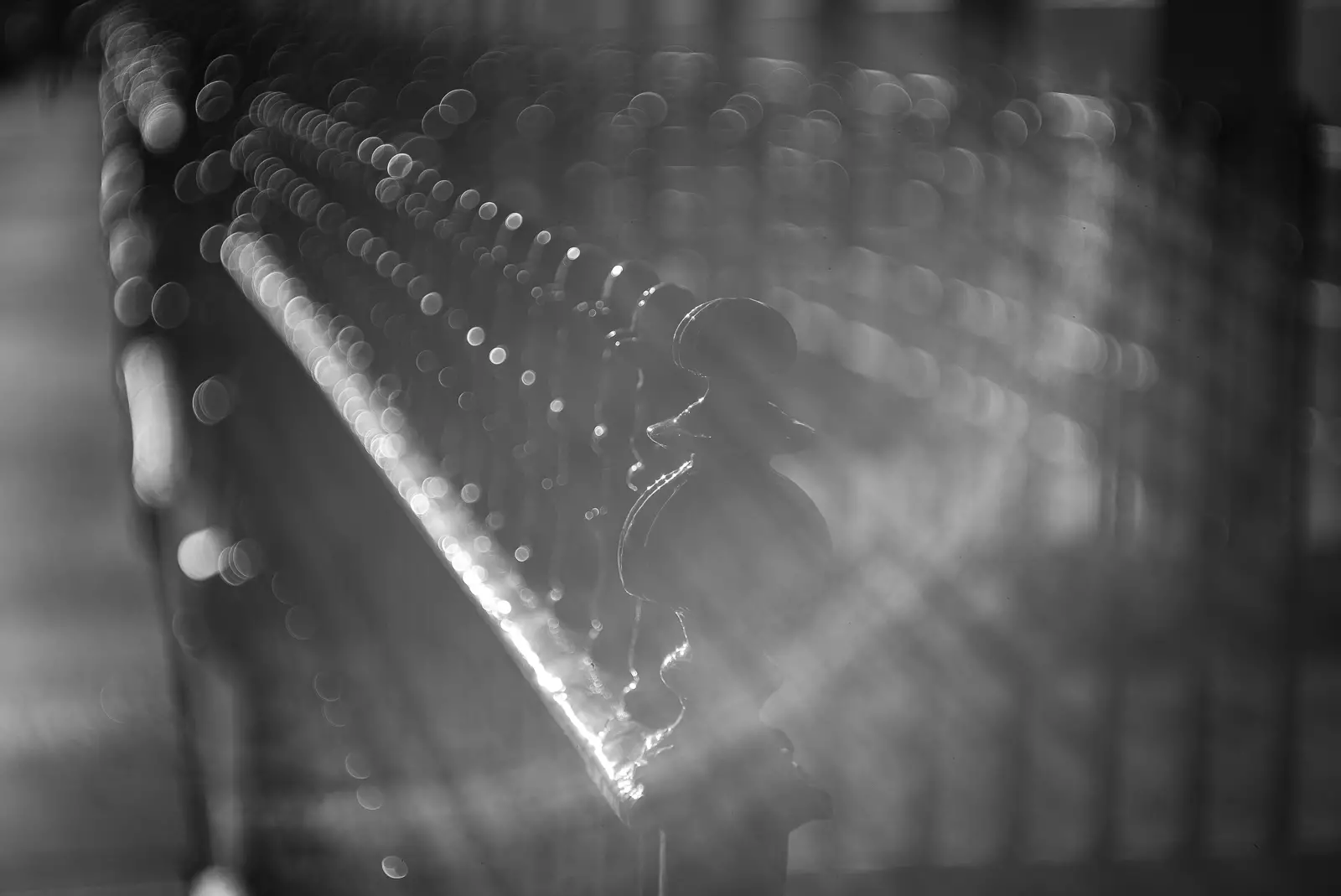
Despite the hood, the flare is still very strong; also note the lovely, slightly bubbly bokeh
One thing needs to be noted about using it with the Monochrom. The blooming effect in the photos that is due to the spherical aberration occurs most prominently around bright elements or edges. It also causes a degree of loss of detail in those areas and makes it very easy to blow out the highlights. On the Monochrom you can’t recover as much information from the highlights as when using some other cameras so it’s extra important to keep those highlights in check.

Another architecture detail shot that demonstrates good sharpness in the centre as well as very decent contrast when used with a red filter under the right conditions; however, the glow on bright elements needs to be kept in check
I was practically done with this article when I took the Thambar out on a cheeky lunchtime walk. I mounted it on the Leica SL again but this time I used the hood as well. And guess what, that pesky washed out centre was back. The rest of the week was pretty hectic so I didn’t do any more shooting but kept thinking about what caused the behaviour. I was so convinced it was the hood that prevented this from happening on the Monochron but clearly that wasn’t the case.
Was it the filter? Did it provide that extra bit of shielding from the sun? I thought perhaps next time I use it on the SL I should put on a UV filter and see. I always do my best thinking when I’m trying to fall asleep and then last night it hit me – it was the adapter. I got the 7artisans close-focus adapter last year to use it with the Sigma FP and it worked as expected. But when I got a used Leica SL this year I was having trouble getting decent colours out of it. Instead, they seemed muddled and I noticed a magenta cast in the centre of the image when shooting white buildings. My initial thought was that it’s the vintage lenses causing colour shifts. But the lenses I was using were neither wide-angle nor had a back element protruding past the mount.
Annoyed with myself for not being able to achieve good colours when using a camera praised for its colour science, I made a last ditch effort and bought a rigid Novoflex adapter. And it worked! Images were more vibrant and the colour casts were gone. As mentioned, I picked up the 7artisans adapter again because I was a bit weary of focusing close with the lens itself as there was nothing stopping the helicoid from unscrewing completely. But it was time to retire it and go back to the Novoflex.
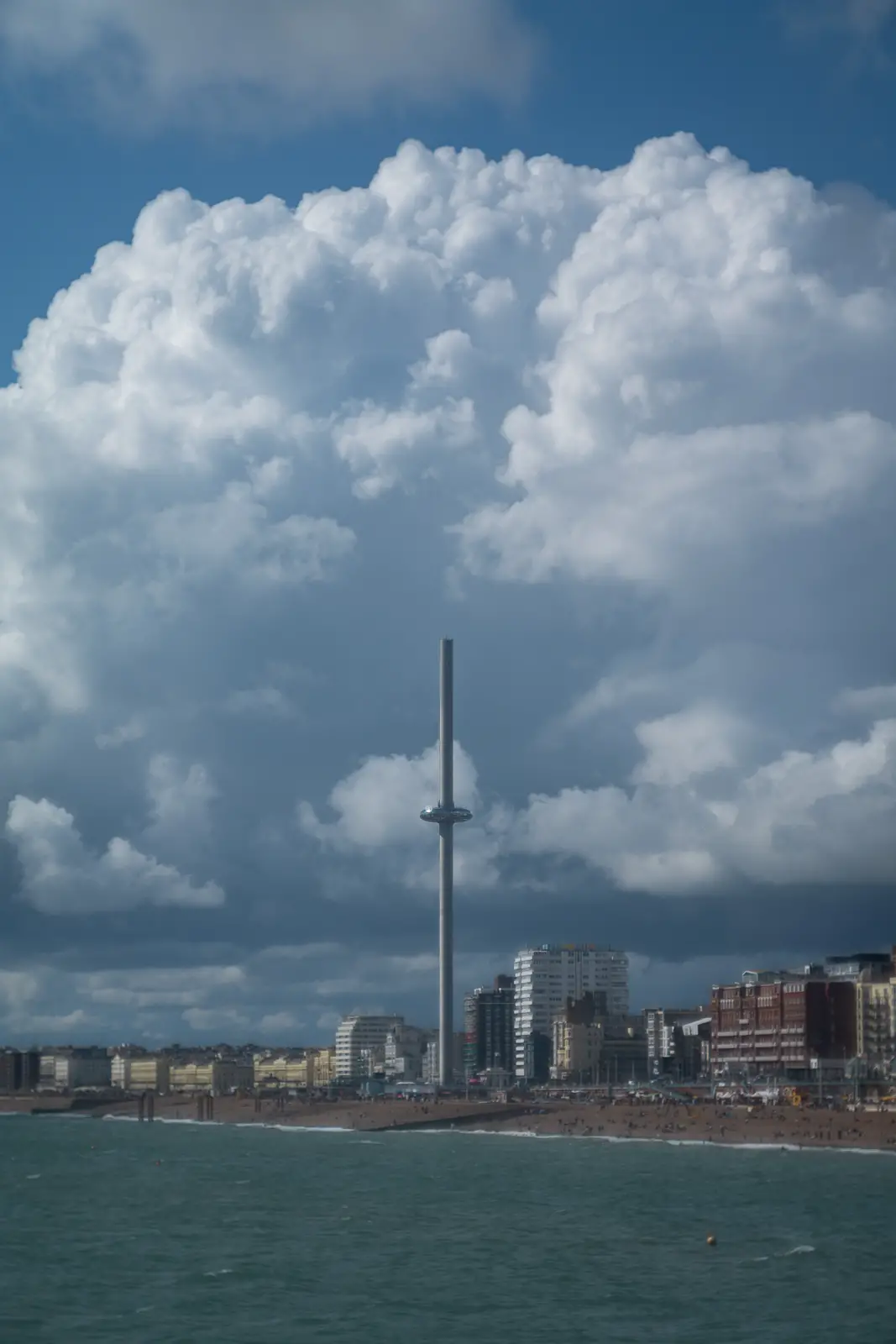
The loss of sharpness on the peripheries of the image is most visible when focusing close to infinity
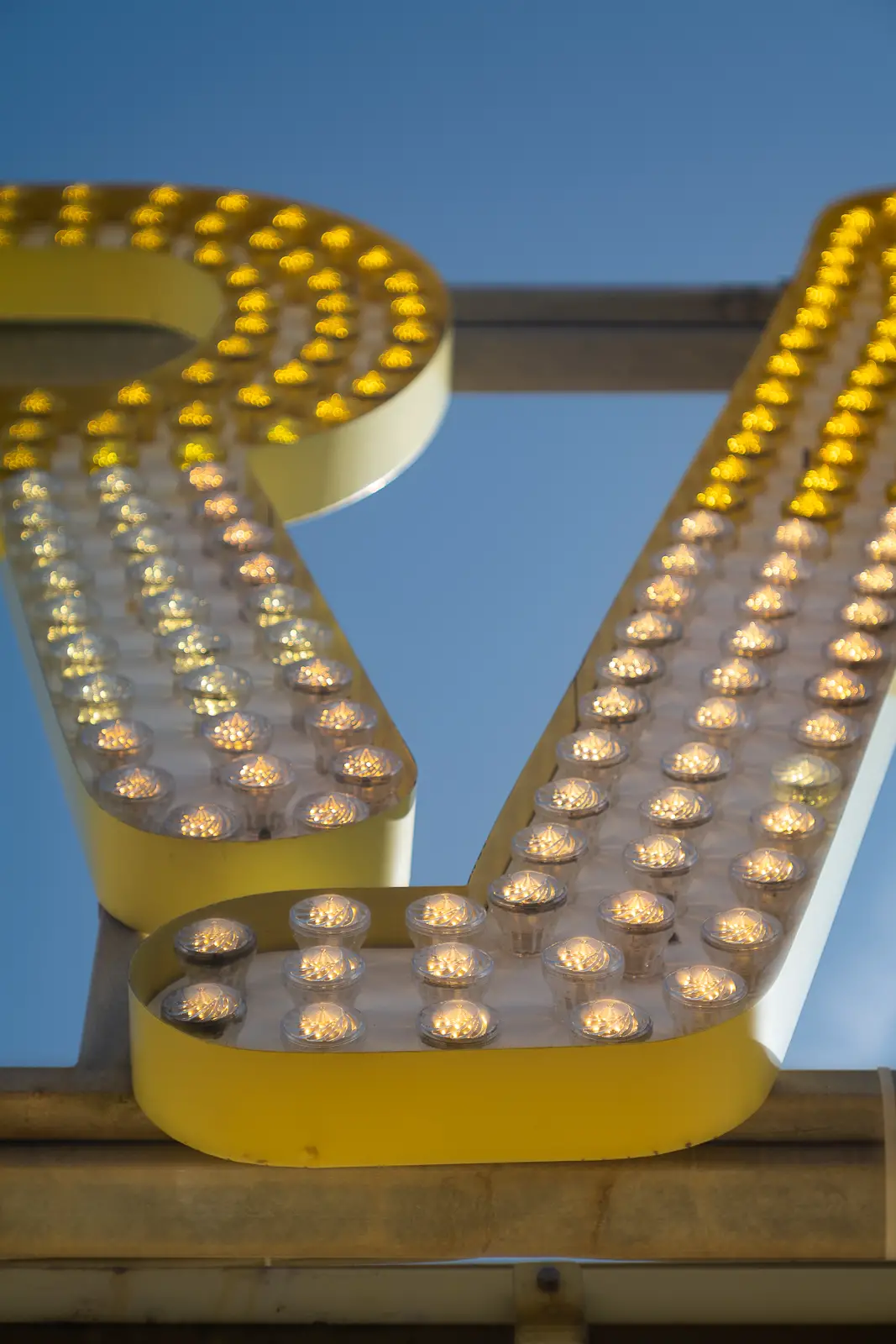
A little bit of that jellyfish bokeh again
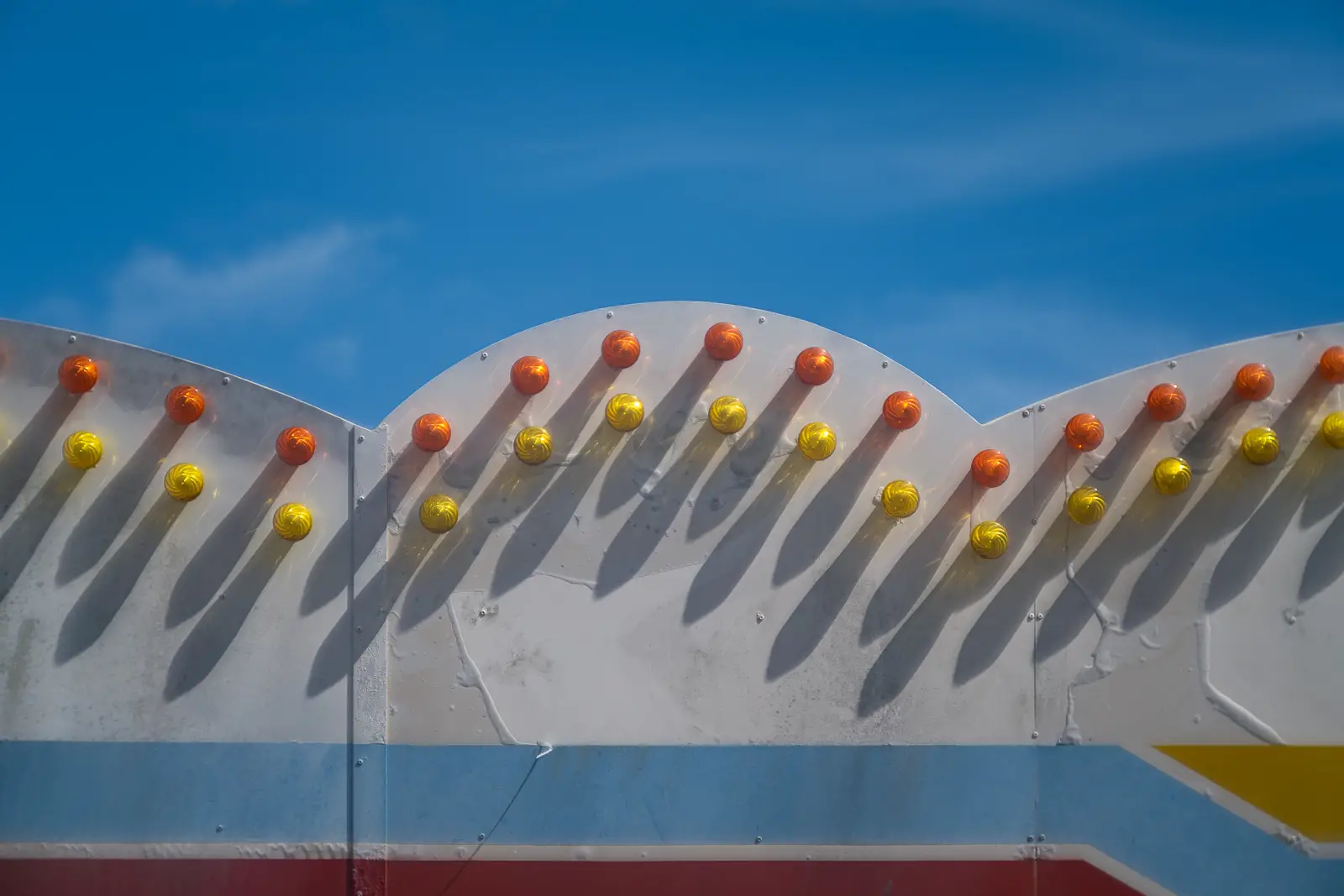
Shooting with the sun results in vibrant, contrasty images
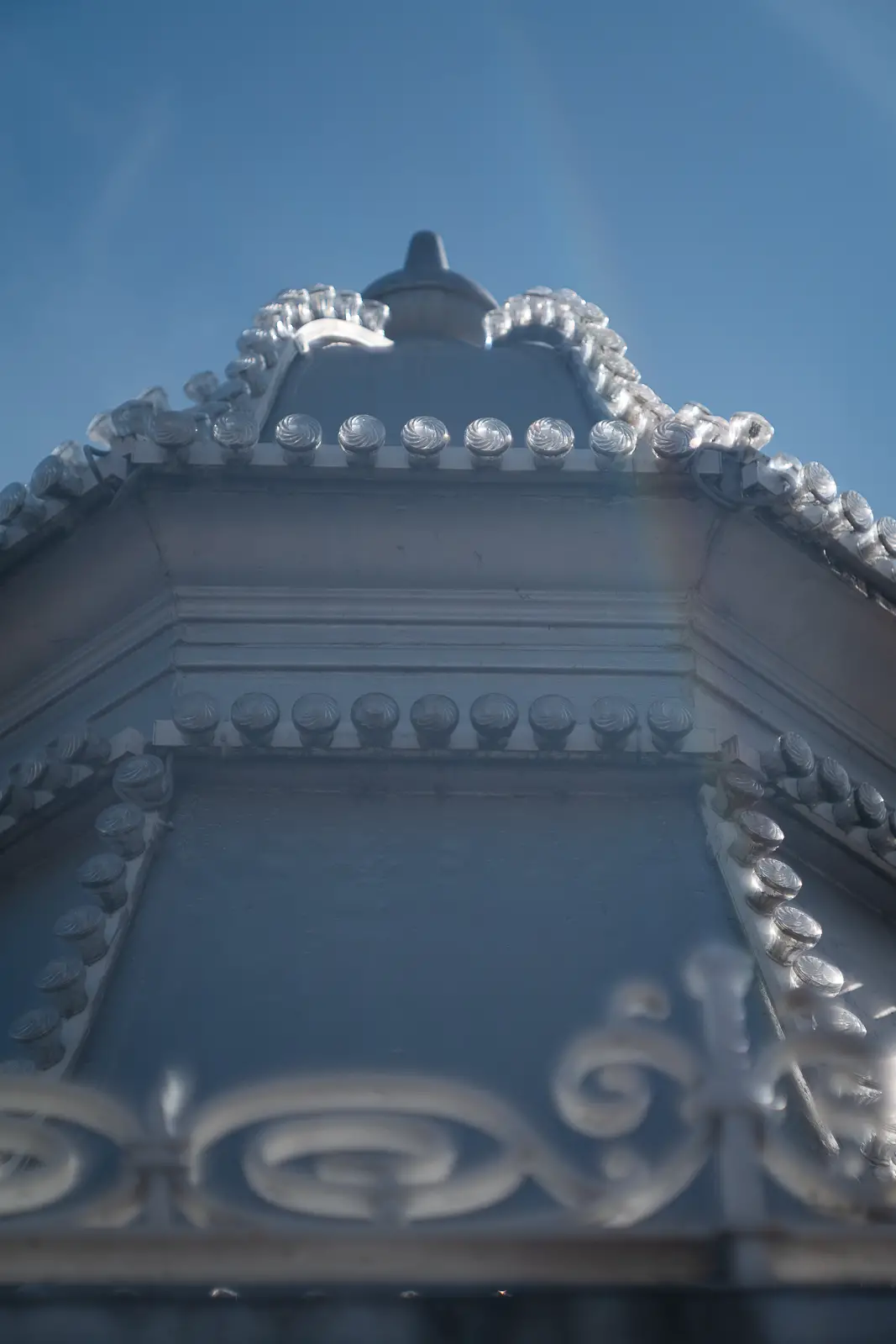
Veiling still occurs of course but it is a lot more uniform across the frame
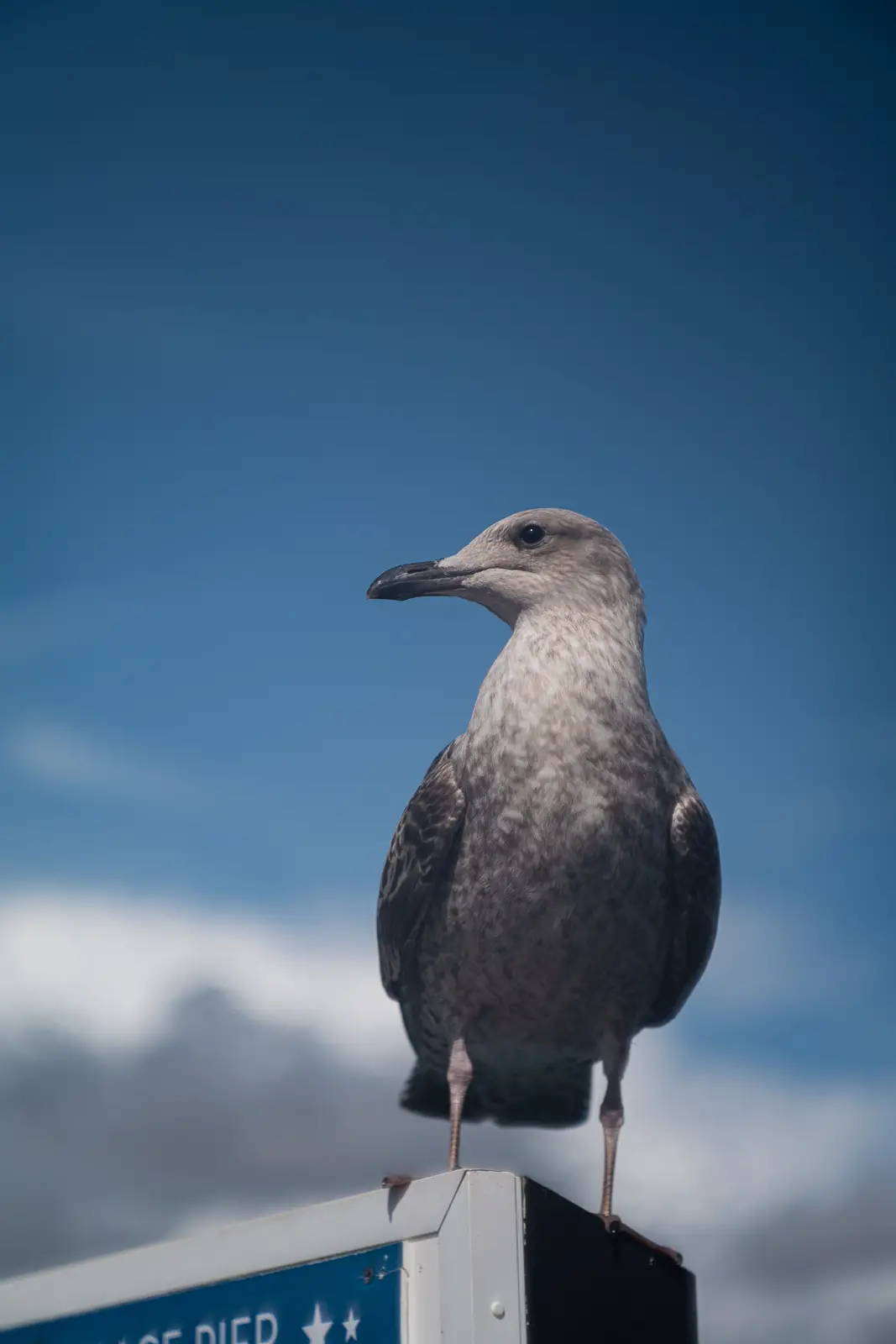
Again shooting with the sun the contrast is very decent
My hunch turned out to be right. Took the lens out today to the Brighton Pier for a third round of my early experiences, mounted on the SL, with no hood or filter. There was flaring and low contrast as expected but any veiling that occurred was a lot more uniform across the frame. Let this be a lesson, poor quality adapters can very much affect image quality.
Conclusion
I still maintain that the Leitz Thambar 9cm f/2.2 is a silly lens. There are so many equally beautiful vintage lenses out there that are sharper, faster, with better contrast, and more practical to use. Most of them will also cost you way less than a working and relatively unscuffed Thambar copy. Just pick up any 90mm Summicron for that matter. This lens is for collectors, those into pre-war uncoated lenses, or just those that for one reason or another really want this particular lens with all of its flaws.
I would have never acquired the Thambar if it wasn’t for the price that was due to the appalling state of it. But I’m really glad I did because it’s definitely a lens that surprised me more than any other. It’s very easy to have strong preconceptions looking at sample images alone. Focus is critical in the case of this lens. When using it on a camera with a high quality EVF such as the Leica SL you can see the exact moment the subject goes from glowy and faded to crisp. But it’s such a thin sliver of the depth of field that it’s easy to miss it.
I think it was quite serendipitous that the aperture got stuck on the wide end but not quite fully wide open as I could test-drive it in a variety of situations. I’m very much looking forward to seeing what it can do both at maximum aperture and around f/8.
You can check out more shots taken with the Leitz Thambar 9cm f/2.2 on my Flickr where I meticulously arrange all my images into albums for each vintage lens I use.
Share this post:
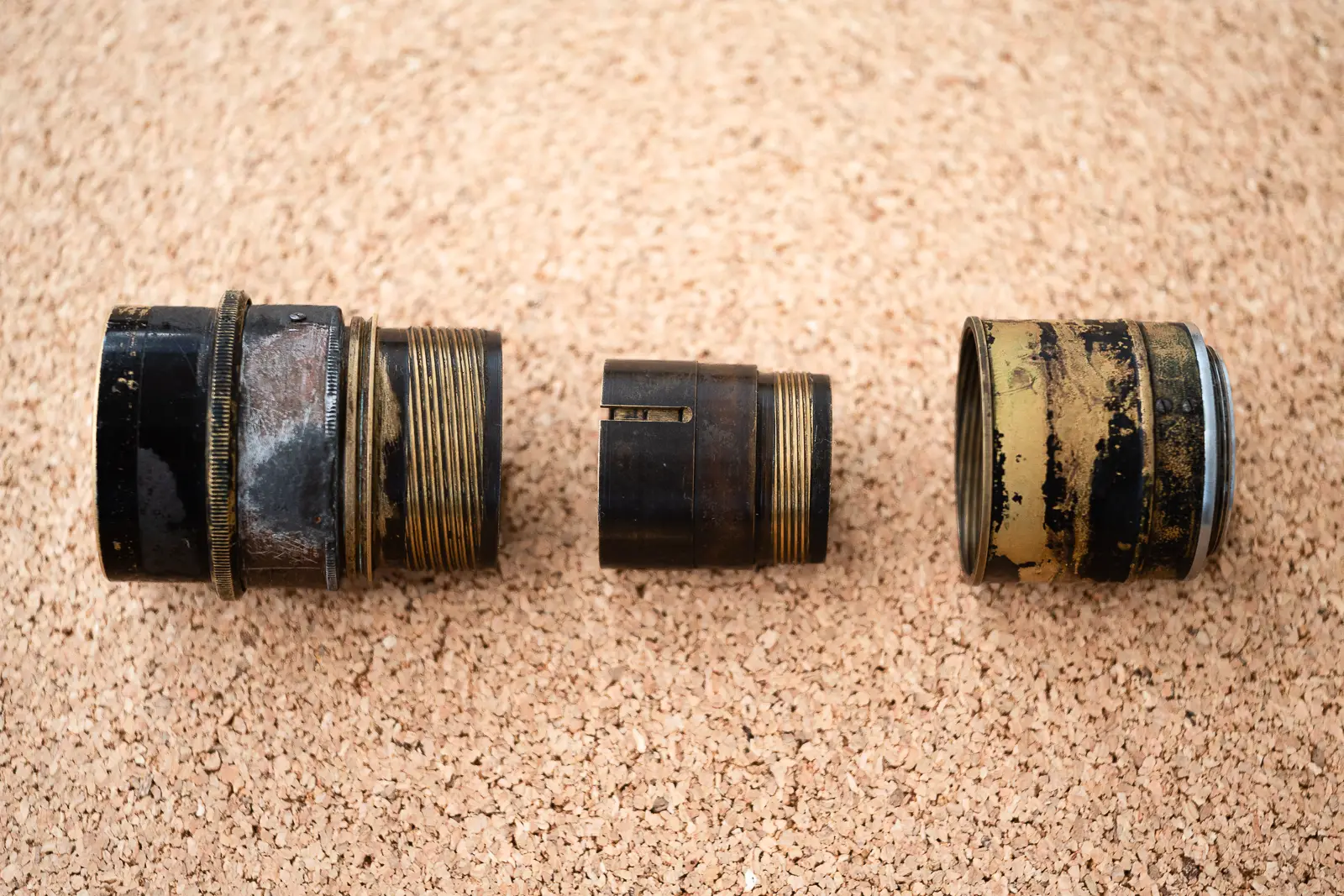








Comments
Louis A. Sousa on Leitz Thambar 9cm f/2.2 – Early Experiences
Comment posted: 11/09/2023
Comment posted: 11/09/2023
Louis A. Sousa on Leitz Thambar 9cm f/2.2 – Early Experiences
Comment posted: 11/09/2023
https://www.ebay.com/itm/263564044638?hash=item3d5da4295e:g:nsAAAOSwp0pas4Hs&amdata=enc:AQAIAAAAwBkjqw4sNH/5n3rfm8juMmrFT2e7N81FlFNxkA/3wbJN1h4SHoUc/aFAZyEYoGVxq2/R+9saqph6owyIMKyhOlEfuaWGjZvS0VZKzXynH1Rbs8gtD0+qUulvd+itCxu8Qk25xlXQM6uryDd/EujJ+qpNJcB4Q7kQrRGrwDNbgKFcxlZSdEwAO7rN+kXQ3Jz3qfujvN97K2+eY1ayT3UyWbNyp3He41BT2l1kGRYxtvo68uGTIgPxomTT/Tt5LVVt+Q==|tkp:Bk9SR4LSo8jQYg
Murray on Leitz Thambar 9cm f/2.2 – Early Experiences
Comment posted: 11/09/2023
Agata's pursuit of such a lens had me smiling...wondering if this was the same story I had in my head, for different lenses.
Does the Type 246 Mono respond to red filters spectrally approaching some type of monochrome film?
I have put all my red filters away for film because they don't act like I expected on an 'ordinary' color digital camera.
I need to revisit some old folder lenses that have no iris (wide open only) again with more organization like you did. I had mixed results & mixed feelings...inconclusive opinions.
Thank you for sharing the adventure.
Comment posted: 11/09/2023
Comment posted: 11/09/2023
Murray on Leitz Thambar 9cm f/2.2 – Early Experiences
Comment posted: 11/09/2023
Petzval Enjoyer on Leitz Thambar 9cm f/2.2 – Early Experiences
Comment posted: 11/09/2023
Tim Bradshaw on Leitz Thambar 9cm f/2.2 – Early Experiences
Comment posted: 11/09/2023
Comment posted: 11/09/2023
Paul Quellin on Leitz Thambar 9cm f/2.2 – Early Experiences
Comment posted: 12/09/2023
David Kieltyka on Leitz Thambar 9cm f/2.2 – Early Experiences
Comment posted: 12/09/2023
For myself I opted for the Thambar's older sibling, a 7.3cm f/1.9 Hektor made c. 1936. The Hektor wasn't designed to be painterly soft at wider apertures but it gets there just the same. ☺️